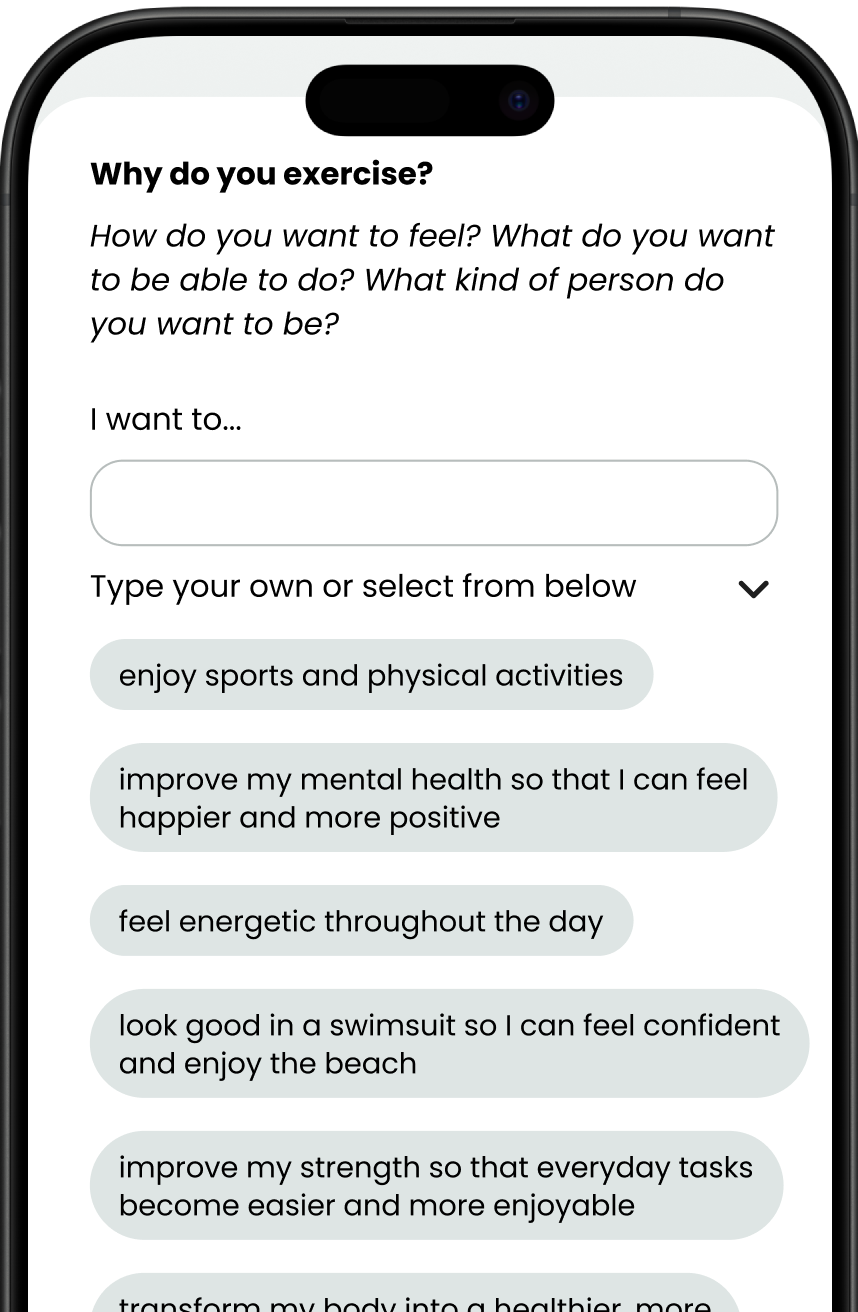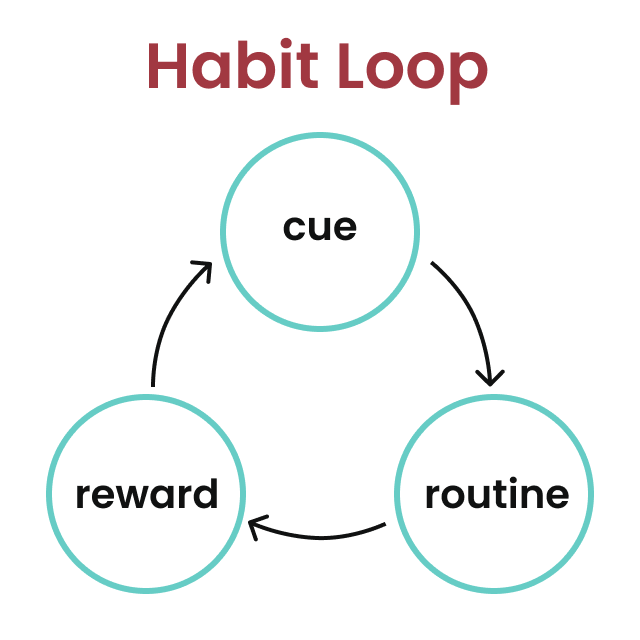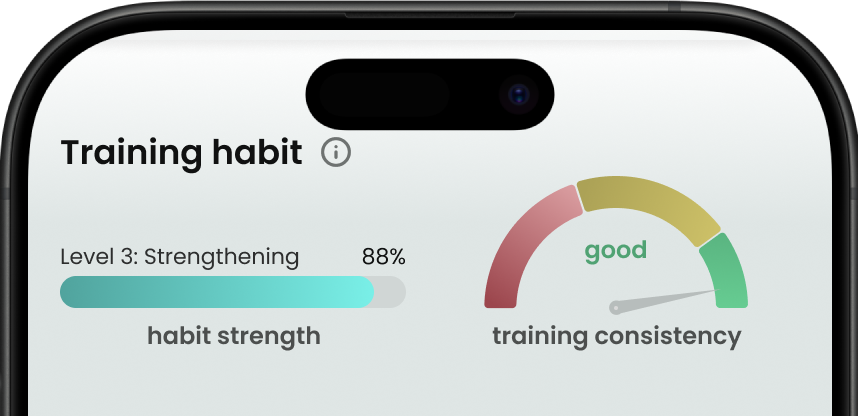The Ultimate Guide to Building an Exercise Habit
We all know that exercise is good for us—but turning good intentions into a lifelong routine is where most people stumble. Whether you’ve resolved to “finally get in shape,” boost your energy, or simply feel more confident, the real challenge isn’t finding the perfect workout plan; it’s building an unshakeable exercise habit. In this guide, we’ll show you how to make starting your workouts feel effortless—and how to build a sustainable routine that fits your life, your goals, and your rhythm.
Establishing a regular exercise routine delivers far more than a sculpted body. Consistent workouts lower your risk of chronic diseases (think heart disease, diabetes, even certain cancers), supercharge your mood by triggering endorphins and stress-busting neurotransmitters, and sharpen your focus so you breeze through work and home life with energy to spare. When exercise becomes a habit, you’re not just investing in your present—you’re setting yourself up for decades of better health, resilience against life’s stressors, and the confidence that comes from thriving in your own skin.
But what makes a habit truly stick? Behavioral science tells us that it’s not willpower alone that keeps people coming back to the gym or lacing up their sneakers each morning—it’s the invisible architecture of cues, routines, rewards, and identity. In the pages ahead, we’ll unpack the three stages of habit formation, reveal how to design your environment for effortless consistency, and walk you through practical strategies to ride out motivational dips and bounce back from inevitable setbacks. Ready to build an exercise habit that lasts? Let’s dive in.
Motivation: Your “Why”
Everything begins with a clear, compelling reason—your personal “why.” Maybe you want to have more energy for busy days, reduce stress so you sleep better, or simply feel stronger when you look in the mirror. These extrinsic motivators—the tangible outcomes you care about—are powerful jump-starters. Write down your core why in a short statement (for example, “I exercise to boost my mood and feel confident about my body”), then revisit it whenever you need a reminder of what you’re working toward.

However, research in behavioral science shows that goals alone can lose their pull over time. To build a habit that endures, you need to fall in love with the process itself. As you begin to enjoy the rhythm of a workout—the endorphin rush of a run, the pump of lifting weights, or the camaraderie of a class—you cultivate intrinsic motivation. At that point, exercise stops feeling like a task and starts feeling like part of who you are: “I’m the kind of person who makes time to move.” That identity-based drive is what carries most people through months and years of consistent workouts. This is where the process of habit formation becomes essential.
The Science of Habit Formation
Building an exercise habit isn’t just about willpower—it’s about wiring your brain to make training feel natural and nearly automatic. Behavioral scientists describe this process using a simple but powerful model: the habit loop, which includes three parts:
- Cue – the trigger that prompts you to act
- Routine – the behavior itself
- Reward – the payoff your brain receives for completing the routine

Let’s say your cue is finishing work at 5 p.m. You come home, change into your workout clothes (routine), and go for a 30-minute run. Afterward, you feel clearer, more energized, and proud of keeping your promise to yourself (reward). Over time, your brain starts linking “end of the workday” with the expectation of that feel-good post-run high. Eventually, you’ll crave it—and your habit starts to run on autopilot.
Here’s another example:
- Cue: You receive your workout reminder on your phone at 7 a.m.
- Routine: You do a short bodyweight circuit in your living room that you have planned and do every week.
- Reward: You log it in your app, see your progress, and enjoy the mood boost that carries into your day.

The reward doesn’t have to be physical—it could be psychological (pride, momentum, progress), social (encouragement, accountability), or even symbolic (crossing off a checklist). The key is repetition: the more you complete the loop, the stronger the neural connection becomes. What once felt effortful starts to feel automatic.
But habits don’t form overnight. Research shows that it typically takes several weeks—sometimes months—of consistent action for a behavior to become automatic. That’s why it helps to think of habit formation as a journey through three distinct stages:
Level 1 – Foundation
This is the beginning. Your workouts may still require conscious effort, but you're starting to show up consistently. You’re learning when, where, and how exercise fits into your weekly rhythm. At this stage, extrinsic motivators—like reminders, visible progress, and your personal “why”—play a key role in helping you follow through.
This is also the most fragile stage. Your brain is still building the wiring that turns a repeated action into a habit. Research shows that the first 6 weeks are especially critical: consistency above 80% during this time greatly increases your chance of long-term success. Think of it as pouring the foundation of a house—lay it carefully, and the rest becomes easier.
Level 2 – Formation
Now, the habit is starting to take root. You feel less resistance before a workout, and scheduling exercise is more automatic. You may catch yourself saying, “I usually train on these days,” and even feel slightly off when you miss a session. You’re not just chasing a result—you’re learning to enjoy the process itself.
This stage marks the shift from needing motivation to having momentum. It’s a sign that your habit loop is working: the cue leads to action, and the action brings a reward—whether it’s a post-workout high, a sense of control, or seeing improvement.
Level 3 – Strengthening
At this level, your habit is resilient. You can train through busy weeks, travel, or stress—and even after a short break, you return without needing to rebuild from scratch. Training isn’t just something you do—it’s part of who you are.
Your motivation has shifted inward. You value the act of moving, not just the outcome, and your identity aligns with your behavior: “I’m someone who trains.” This is what makes long-term consistency possible—a deep connection between your actions and your sense of self.

Now that we understand how habits form and solidify, let's explore practical strategies to make your exercise routine as effortless as possible by optimizing your environment and creating powerful cues that trigger action.
Make It Easier to Show Up: Context, Cues & Enjoyment
One of the most effective ways to speed up habit formation is to anchor your routine to a consistent context. Research shows that when a behavior happens in the same environment—same time, same place—it requires less cognitive effort over time. That predictability acts as a strong cue, triggering your habit loop more reliably.
For exercise, this means:
- Train on the same weekdays and at roughly the same time
- Use the same location (or starting point) whenever possible
For example, you might decide to work out every Monday, Wednesday, and Friday at 6 p.m., right after work. Your cue becomes the act of leaving work, and your brain starts to associate that moment with training. Whether you hit the gym near the office or change into running shoes at home and head out the door, the key is that you remove guesswork. The less you have to decide, the easier it becomes to just start.

You can reinforce the routine by stacking it onto something you already do. This is called habit stacking. For instance:
- “After I brush my teeth in the morning, I’ll do 5 minutes of mobility work.”
- “After I put the kids to bed, I’ll do a 15-minute bodyweight workout in the living room.”
Another simple way to make training more enjoyable—and therefore more repeatable—is to pair it with something you look forward to. Put on your favorite playlist, catch up on a podcast, or queue up an audiobook. This not only makes the workout more pleasant, but it also strengthens the cue: once your brain links that music or that podcast with movement, just pressing play can signal it’s time to go.
The goal isn’t perfection—it’s repeatability. A predictable context and a touch of enjoyment go a long way in making workouts easier to start and easier to stick with.
Tracking Progress & Celebrating Wins
Progress is one of the most powerful forms of motivation.
That feeling when you lift heavier than last week, run a bit faster, or simply notice that you no longer dread lacing up your shoes—that’s the reward in the habit loop. It’s the feedback that tells your brain: “This is working. Keep going.”
This is why it helps to think of your workouts not just as exercise, but as training.
Exercise is moving for the sake of movement—and that’s great. But training gives movement a direction. It’s progress with purpose. And progress itself becomes the reward.
To tap into this powerful loop, you don’t need to chase personal records every week. You just need to track the things that matter to you. That might be:
- The number of sessions you complete each month
- The weight you lift or reps you perform
- Your running pace, duration, or distance
- Or even a simple calendar streak of consistent training
Logging your workouts—either in a notebook, app, or spreadsheet—can turn invisible effort into visible progress. This kind of feedback makes you more likely to stick with the habit long-term. Even just checking off a box after training gives a small dopamine hit that reinforces the behavior.

And don’t underestimate the power of celebration.
Finished your 10th workout this month? Hit a new squat PR? Showed up on a day you didn’t feel like it?
Celebrate it.
Not with a cheat meal or skipped workout, but with real recognition of the effort you’ve put in. A fist bump, a journal entry, a brag in your group chat, saying to yourself “I did it!”—it all helps your brain tag this behavior as “worth repeating.”
How does this work? When you immediately acknowledge a win, you get a hit of dopamine—the brain’s “feel good” chemical. This reinforces the behavior that led to the reward, making you more likely to repeat it. Think of it like training your brain the way you'd train a puppy: do the behavior, get the treat. You’re training your brain to feel good about the process, not just the outcome.
Because ultimately, building a habit isn’t just about discipline.
It’s about turning training into something you look forward to—something that feels good to complete, and even better to stick with.
The Role of Discipline in Habit Creation
Even the best-designed habit system needs a spark of discipline to get off the ground. Especially in the early stages, when motivation starts to dip and the habit isn’t automatic yet, you’ll sometimes need to act when you don’t feel like it. That’s discipline: choosing long-term benefit over short-term comfort. And that’s a powerful driver for success in all aspects of life.
But here’s the key—discipline isn’t what powers your journey, it’s what fills the gaps. You shouldn’t need to white-knuckle your way through every workout. In fact, relying too much on willpower—the "no excuses" mindset—can backfire, leading to burnout or falling off track entirely. The goal, however, is not to eliminate discipline, but to reduce your dependence on it as your habit gains strength.
So when should you use it? When your motivation fades and your habit isn’t strong enough to carry you through. When that happens, don’t see it as failure—see it as an opportunity. That moment when your cue goes off and you feel resistance? That’s your training ground. Showing up anyway is a win. Remind yourself, “I don’t need to feel like it—I just need to do it.” Then, follow through and celebrate the fact that you did it anyway. This reinforces your identity as someone who follows through, even when it’s tough.
As your habit strengthens, these moments get easier—and rarer. A strong system, with consistent cues, a realistic routine, and meaningful rewards, will carry most of the load. You’ll feel less friction. You won’t need to psych yourself up each time. You’ll just show up—almost on autopilot.
Overcoming Roadblocks
No habit journey is free of bumps in the road. Even when your system is solid, life happens: motivation dips, routines get disrupted, and priorities shift. The key is to expect these moments—not fear them—and build strategies to overcome them.
Dealing with Motivational Dips
Motivation isn’t a constant—it ebbs and flows like any other feeling. When the initial spark fades, it’s easy to feel disconnected from your goals. In those moments, reconnect with your why. What made you want to train in the first place? Was it a moment of frustration, a spark of inspiration, or a vision of your future self? Try to recall that feeling. Even if it seems distant now, chances are it will return—and when it does, you’ll be glad you kept going today.
When motivation is low, this is where discipline steps in. But discipline is a limited resource, and some days it just won’t be there. That’s okay. Instead of giving up entirely, shift your focus to what’s possible.
Do the smallest version of your workout. Five minutes of jogging instead of thirty. One set of your first gym exercise. A few pushups on your bedroom floor. This isn’t about lowering the bar—it’s about keeping the habit alive. A short session still completes the habit loop: cue, routine, reward. And that’s what counts.
Even better, getting started often leads to doing more than you planned. Once you're moving, momentum takes over. And if it doesn't? You still win—because you showed up when it mattered most.
Check it off, celebrate the win, and move on. You’re training not just your body, but your identity: you’re someone who follows through—even on hard days.
Handling Interruptions
Life doesn’t run on your training schedule. Travel, illness, unexpected responsibilities—interruptions happen. The real challenge isn’t the break itself, but how you respond afterward. The longer you're away, the harder it becomes to restart. That’s why a smart approach isn’t to aim for perfection, but to plan for disruption.
Whenever possible, keep a small part of your training habit alive. That might mean swapping your gym session for bodyweight movements in a hotel room, or replacing your run with a swim while on holiday. If your usual cue is “after work,” keep the rhythm by training “before dinner” instead. The goal is to preserve your context—even loosely—so the restart feels familiar.
When you're ill or sidelined by injury, movement might not be possible—and that’s okay. What matters is staying connected to your identity as someone who trains. Read about fitness. Watch content that inspires you. Reflect on how far you’ve come. These subtle acts reinforce your mindset and reduce the psychological friction when it’s time to return.
Interruptions are temporary. Your identity isn’t. Stay tethered to it, even when you’re forced to pause.
Your “Get Back on Track” Plan
Restarting after an interruption is one of the biggest tests in building an exercise habit. That’s why you need a plan—not for if you’ll fall off, but for when. Interruptions are part of the process, and how you respond to them matters more than avoiding them in the first place.
The first step is a mindset shift: if you’ve committed to becoming a fit, active person, then you’ve already made the decision to continue—even before the interruption happens. You might not feel motivated right away, but you don’t need to. What helps is a small prompt—a reminder in your calendar, a workout notification, a visual cue like your gym bag by the door. Something that gently nudges you to act without requiring you to think too hard or talk yourself into it.
And when you do act, keep it simple. Don’t try to make up for lost time. Don’t punish yourself with a “comeback” workout. Ease in. Your only goal is to rebuild the rhythm. A short run. A basic strength session. Something easy enough to start, but meaningful enough to count. That first session is the hard part—after that, momentum does the work.
And if it’s been a while, remember: every successful restart is a vote for your identity. Each time you get back on track, you’re proving to yourself that you don’t quit—you adjust. That’s how long-term habits are built. Not from never falling off, but from learning how to return.
Advanced Maintenance & Growth
Once your habit is in place, training becomes easier. The internal resistance is gone, and showing up starts to feel automatic. But real, lasting transformation happens when we move from doing workouts to being someone who trains. That’s the shift from behavior to identity—and it’s what makes fitness sustainable for life.
At this stage, we’re no longer just trying to stay consistent—we’re growing into our new identity. And we’re laying the foundation for deeper, more lasting motivation.
This is where Self-Determination Theory offers powerful insight. It shows that true, long-term motivation grows when three basic needs are met:
- Autonomy – You feel in control of your training choices.
- Competence – You see and feel yourself improving.
- Relatedness – You feel connected to others through your efforts.
Together, these needs fuel intrinsic motivation—the kind that makes you want to move, train, and grow for the joy and meaning it brings right now, not just for future goals. At the same time, every workout you complete, every plan you adjust to your life, and every time you keep going—those are all signals to yourself: this is who I am now.
You’ve already started becoming that person. Now, let’s reinforce that identity and build a training life you truly want to sustain.
Autonomy: Taking Ownership of Your Training
Intrinsic motivation thrives when you feel like you're in the driver’s seat. That means shaping your training around your preferences, your lifestyle, and your goals—not just following a program because someone said you should.
This doesn’t mean going it alone or needing expert-level knowledge. It means tuning in: What type of movement do you enjoy? What fits your week? What goals feel meaningful to you right now?
Choosing your own path fosters a sense of ownership. It also reinforces identity: “I’m someone who chooses to train, because it matters to me.” The more control you feel over your routine, the more invested you become in it.
Competence: Progress Fuels Enjoyment
Few things are more motivating than knowing you're getting better. When you see tangible improvements—lifting heavier, running farther, moving more freely—you start associating training with success and growth.
That sense of progress fuels intrinsic motivation, but it also shapes your identity. If you feel capable, you begin to think of yourself as someone who’s strong, fit, or disciplined. This new self-image then motivates more action, creating a positive loop.
Even if your original goal has been achieved, setting new challenges keeps things interesting and rewarding. Maybe it’s a heavier lift, a longer run, or simply more consistency. The key is to keep growing in a way that feels satisfying.
At this stage, goals don’t have to be big to be meaningful—they just need to stretch you enough to keep things exciting.
Relatedness: You’re Not Doing This Alone
Fitness is more fun—and more sticky—when it’s social. Surrounding yourself with other active people builds a sense of relatedness and accountability. Whether it’s a gym buddy, a group class, or an online community, being part of something larger reinforces your identity and adds positive pressure to stay engaged. It becomes a shared experience, something that bonds you to others.
This feeling of connection helps habits stick, but it also shapes how you see yourself. It reinforces the identity: “I’m one of them. I belong here. I’m a person who trains.” The group becomes a mirror reflecting the person you’re becoming.
If you’ve been training solo, now might be the time to explore a new layer of social accountability. Share your goals with a friend. Join a group. Engage online. Surround yourself with people who train—not for pressure, but for perspective and encouragement.
Conclusion & Next Steps
If you’ve made it this far, you already know: getting fit isn’t just about grit or finding the perfect routine—it’s about building a system that works with your psychology, not against it.
Let’s recap that system:
- Start with motivation, but don’t rely on it. Use it to kickstart action and design your habit loop.
- Anchor your habit to a consistent context—same time, same place. Strengthen it further with habit stacking.
- Use the habit loop: a clear cue, a simple routine, and a satisfying reward. That’s how behavior turns into habit.
- Track your progress—because small wins matter. They fuel motivation and reinforce your identity.
- Celebrate your effort, not just the outcome. Every “I showed up anyway” counts.
- Play the long game. Fitness isn’t a sprint—it’s a lifestyle. Interruptions happen. What matters is getting back on track.
- Reinforce your identity: Every action you take is a step towards the person you’re becoming.
- Grow into intrinsic motivation: Move from have to train to want to train by making training your own, seeing yourself improve, and connecting with others who share your goals.
This isn’t a quick fix. It’s a transformation—from working out because you “should” to training because it’s just what you do.
Next Steps: Make It Easier with LiveFit
If you're ready to put this into action, the LiveFit app is here to guide you through every step. It helps you:
- Stay connected to your motivation by uncovering your deeper "why”
- Build your training habit by setting up your habit loop and putting it into action
- Track your progress and consistency and get meaningful insights
LiveFit doesn’t just tell you what to do. It helps you become the person who does it.
You're Closer Than You Think
Whether your goal is to stay healthy, build strength, run faster, or simply feel better in your body—this method can get you there. You now have the tools. And every small action you take from here will compound into something greater.
You don’t need to be perfect. You just need to keep showing up.
Start small. Stay consistent. Become who you want to be.




